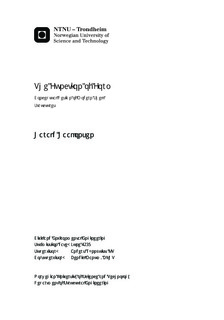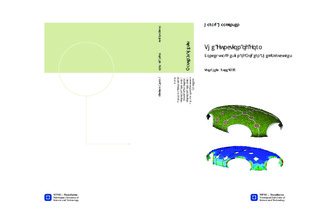| dc.contributor.advisor | Rönnquist, Anders | nb_NO |
| dc.contributor.advisor | Manum, Bendik | nb_NO |
| dc.contributor.author | Haakonsen, Harald | nb_NO |
| dc.date.accessioned | 2014-12-19T12:02:47Z | |
| dc.date.available | 2014-12-19T12:02:47Z | |
| dc.date.created | 2013-09-19 | nb_NO |
| dc.date.issued | 2013 | nb_NO |
| dc.identifier | 649818 | nb_NO |
| dc.identifier | ntnudaim:9649 | nb_NO |
| dc.identifier.uri | http://hdl.handle.net/11250/237320 | |
| dc.description.abstract | Concrete shells were a hit at the middle of the nineteenth century, but have since decreased in popularity. Landmark buildings of recent years may indicate that curved shells are again in vogue among architects. Shell structures are hard to analyze without the aid of numerical tools. A thorough understanding of structural behavior, obtained through experience with such structures, might improve the engineering intuition that is helpful upon designing. This experience is sought in this thesis. Through studies of both realized and conceptual structures, the structural behavior of geometrical forms are studied. Each form is exemplified by renowned shell structures. A more complicated conceptual design, provided by mmw architects, is studied. The results from these cases are used as a tool to discuss the function of more complexly shaped shells. It is found that principles obtained for simple structures may apply for more advanced forms. This approach, learning by experience from basic structures, seems to enhance the understanding of more complex shapes, which makes it a useful tool in conceptual design of shell structures. | nb_NO |
| dc.language | eng | nb_NO |
| dc.publisher | Institutt for konstruksjonsteknikk | nb_NO |
| dc.title | The Function of Form: Conceptual Design of Modern Shell Structures | nb_NO |
| dc.type | Master thesis | nb_NO |
| dc.source.pagenumber | 168 | nb_NO |
| dc.contributor.department | Norges teknisk-naturvitenskapelige universitet, Fakultet for ingeniørvitenskap og teknologi, Institutt for konstruksjonsteknikk | nb_NO |

